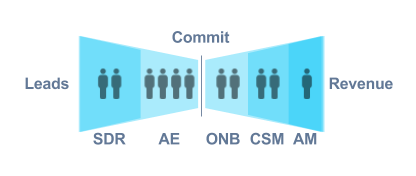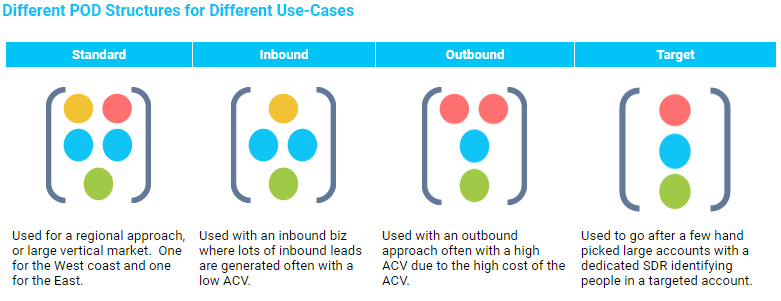As digital marketing recruiters, we see far too many executives in the C-suite make common mistakes that need to be avoided if your organization is going to be successful. Unfortunately, these preventable mistakes have long-lasting negative impacts on your business and your bottom line.
C-level executives, especially CMOs, face many challenges as the pace of change and development of new technology in digital marketing is driving the need for new strategy, better leadership and an entirely new team to execute your digital strategy. However, with the transformation of digital, the CMO also has the opportunity to be the leader and pioneer for their organization.
Common (and Dangerous) CMO Mistakes to Avoid in Your Next Digital Marketing Executive Search
As a marketing executive search firm, we know the CMO role isn’t an easy one to take on. In fact, CMOs have the shortest average tenure in the C-suite of around 4.1 years.
We have been marketing executive recruiters for over 20 years and have seen first hand the changing responsibilities expected from the CMO. With the rapid rise of innovative technology, it’s primarily the CMO’s duty to ensure their team is able to thrive in the new digital age and produce results. Ultimately, the CMO is accountable for setting the direction of a brand’s marketing and leading their team in succeeding as marketing evolves.
The CMO faces the dynamic environment as we no longer have marketing and digital marketing, it is all just marketing again and you need to be able to drive results with revenue and a brand resting on your shoulders. Consequently, an ineffective or weak CMO can bring down an entire organization. To combat the strenuous challenges marketing leaders may encounter, we’ve compiled a list of missteps CMOs should be careful to steer clear of.
Lack of Proper Attribution

Top CMOs today can attribute investment. No excuses, no exceptions. The growing mass of data and devices makes it increasingly difficult to clearly attribute which channels and touch points lead to a conversion, or how much credit each channel should get. CMO’s at the top of the field have this figured out.
When looking at the buyer’s journey, customers go through multiple touch points – and it’s critical CMOs are able to lead their teams in assigning credit to a specific touch point along the journey.
The ultimate goal of attribution is to understand the value of each touch point to scale successes effectively. In order to calculate true ROI, CMOs must be able to understand how much spend and credit of a sale can be attributed to any single marketing touch point or effort.
In the midst of a digital world, this is where big data becomes highly useful. CMOs need to understand how to leverage the right tools and properly interpret data so attribution can drive better decisions. The data itself is not the answer, knowing what to do with and how to interpret the data is.
As we go forward, CMOs should also pay closer attention to AI. Many sophisticated AI tools are now equipped to better handle attribution, and can be used to calculate specific KPIs such as the likeliness of a visitor making a purchase based on their profile and behavior. This type of insight allows brands to serve truly personalized messages that convert.
Uncertain Organizational Structure

Is your marketing organization structure properly built from the changes that occurred over the past few years in marketing?
In digital marketing executive search, we see that many organizations don’t have the right level of digital marketing talent top to bottom for optimal success. While the organizational structure of a marketing department may depend on the particular size of the company and its budget, putting the proper structure in place helps teams clearly understand their roles and responsibilities.
In today’s space, there’s no strict division between digital marketing and marketing. The penetration of technology in the marketing landscape has blurred the lines between the traditional and newer channels. Thus, the CMO that thrives in the digital world will be one who adopts a digital-first mindset to ensure their team and organization are at the forefront of innovation. Over 80% of the marketing org charts we see today have not fully integrated digital best practices.
Inefficient Use of Investment in Marketing Technology
Brands are becoming more dependent on technology to better optimize processes and serve value to their audiences. And the rapid development of marketing technology is what truly drives the demand for CMOs that are digitally savvy.
A lack of urgency can significantly hinder your organization’s road to digital innovation. Martech has become a crucial piece in driving bottom line growth, and marketing executives will need to be capable of identifying not only the right tools, but the right human intelligence to support them.
As new technologies emerge, it’s crucial that CMOs lead their teams and organizations to understand the true impact martech has on marketing efforts. As digital marketing recruiters we encourage organizations to pursue marketing talent (from top to bottom) that possesses key skillsets to succeed in the martech landscape. You need both the right strategy and the right talent to implement.
Failing to Create a Culture Within Your Team

As marketing executive recruiters we know that most of the time talent does not change jobs for money. The right leadership and culture is what keeps top of the line marketers in your organization.
With such a high demand in skilled marketing talent, it’s essential that C-level leaders, especially CMOs, continuously work toward improving their organizational culture. Culture does not only have an impact on employees internally, but significantly impacts the long-term growth of a business.
As a CMO, one must have the ability to update best practices and encourage an environment of continual learning. Among continual learning, respect and strong leadership is key in fostering an excellent organizational culture.
Closing Words
Success in the CMO role is different today than it was five years ago and will change again in the next five years. As a CMO you need to lead your team by example in continual learning. It is most critical to be successful in your own role.
As the leading digital marketing executive search firm, we pursue leaders who not only possess critical, cutting-edge skills, but those that are able to clearly communicate them through their leadership. The CMOs that possess innovative marketing skills and influential leadership qualities are in high demand and are the ones that will make a true difference in tomorrow’s world of marketing.

























 As regular readers will know, I’ve been a long-standing advocate of establishing repeatable sales processes, but please bear with me while I take what might appear to be a contradictory position: In today’s typical complex B2B sales environments, there is no such thing as a universal “one best way” of handling every sales opportunity.
As regular readers will know, I’ve been a long-standing advocate of establishing repeatable sales processes, but please bear with me while I take what might appear to be a contradictory position: In today’s typical complex B2B sales environments, there is no such thing as a universal “one best way” of handling every sales opportunity. Bob Apollo
Bob Apollo




















